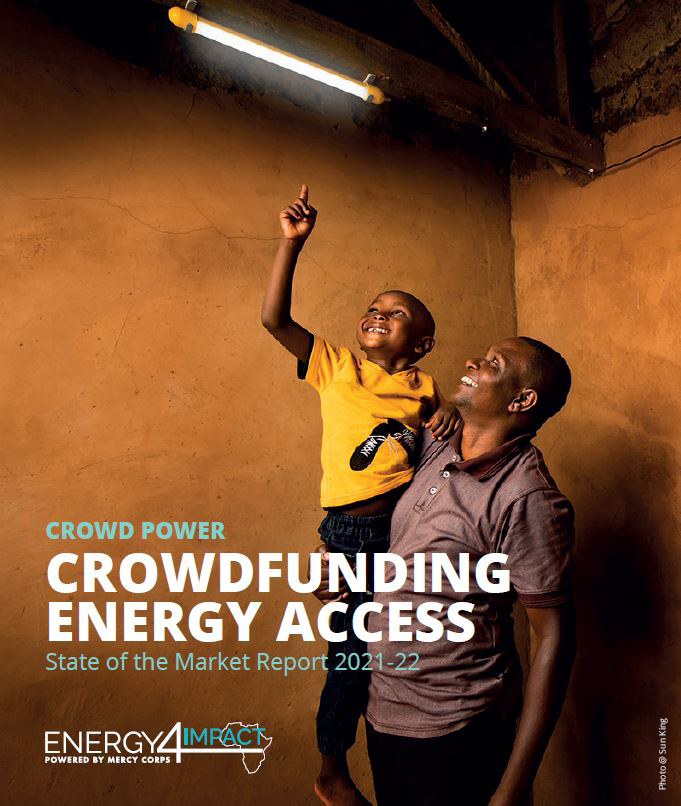Crowdfunding Energy Access – State of the Market Report 2021-22
Energy access projects raised $61.5 million on crowdfunding platforms in 2021, making it a record year for energy access crowdfunding. Crowdfunding, particularly through debt-based models, has become an important source of financing in the energy access sector, accounting for an average of 16% of total investment volumes from 2018 to 2021 (GOGLA, 2021).
Debt platforms alone raised over $55 million in 2021. The energy access crowdfunding market displays different characteristics from the overall energy access investment market – fundraising is significantly less concentrated amongst the top seven scale-up companies in the sector (BBOXX, d.light, ENGIE Energy Access, Sun King, Lumos, M-KOPA, and ZOLA). Our findings suggest that crowdfunding is playing an important role in addressing the financing gap faced by companies raising less than $100 million each year. The energy access crowdfunding market remains however concentrated, five companies raised together 45% of the $61.5 million in 2021.
Trine continues to be the biggest player in the energy access crowdfunding market in 2021 (raised $20.4 million), followed by Energise Africa ($12.7 million) and Lendahand ($5.1 million). These platforms generally lend upwards of $250,000 to borrowers. Charm Impact and Kiva’s direct lending initiative continue to be the main debt platforms providing smaller-ticket loans of $20,000 to $100,000.
Crowdfunding can be a powerful tool to resolve well-known market gaps, such as the lack of financing for earlier-stage companies. The speed and flexibility of crowdfunding also make it attractive to companies in the scale-up phase. More support is needed to increase access to smaller ticket-size investments, and to build initiatives that are frontier, and inherently more risky (e.g. local currency hedging). Donor initiatives, such as Crowd Power, can support platforms to reach smaller companies by covering the costs of origination and due diligence.
The current phase of the Crowd Power programme runs until end of 2025 and seeks to address three common challenges faced by crowdfunding platforms:
- Lack of pipeline – It covers the upfront cost of due diligence of investees and set-up costs of new “de-risking” products for investees. It also occasionally provides match funding for crowdfunding campaigns.
- Lack of investors – It supports investor outreach activities, including incentives for new investors.
- Operating costs – It enables platforms to onboard investees more efficiently and identify the most cost-effective interventions to attract investors.
Download the Crowdfunding Energy Access - State of the Market Report 2021-22.

